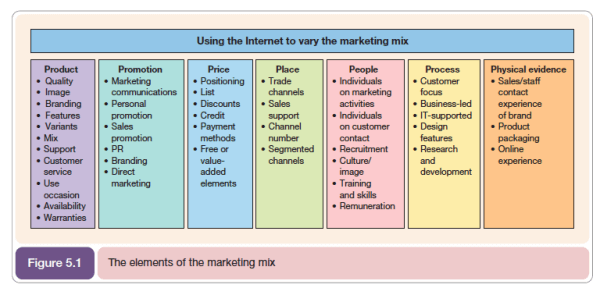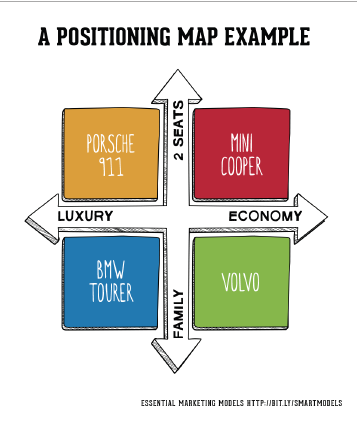Having a clear marketing model is critical for any company. Having a defined and rigid marketing model is the key to a huge revenue. Without that everything would be in shambles and nothing certain to help you begin on the path to success. There are many business models to look up to for your business needs. To choose one and go ahead with it, you need to look at its requirements and how it would work. Much like a shopping list, but one where you need to be very careful. Let’s have a look at some of the best marketing models that can help with increasing your revenue.
1. The marketing mix model:
This model highlights the 7 P’s of a marketing plan. The 7 P’s of a marketing plan are: Place, Price, promotion, people, process, and physical evidence and most important- product. This model keeps the modern methods of digital marketing and social media marketing at bay. The marketing mix model focuses more on the traditional methods rather than the newest methods to target audiences. Here is a figure that helps understanding it:

Source: https://www.smartinsights.com/digital-marketing-strategy/online-business-revenue-models/marketing-models/
2. USP: USP (Unique Selling Proposition):
This is more of a method than a model. This is because it is not a fixed model, rather the opposite of fixed. Having something totally unique from the competition is the main selling point of the company which uses this method.
3. Boston Consulting Group Matrix:
This is a matrix/grid based model. It segregates the products offered by the company into different categories. Typically, we divide them into four categories- star, cows (as in cash cows), dogs and question marks. Now getting to the point of why it is segregated:
We categorize the products in the dog category when the products have low growth rate or very small marketing share. Question marks have products that offer high growth percentage but have low market share. Star category has products with both- high growth rate as well as a high market share. Cows’ category has products that serve as cash cows. That is, products that are having a low growth rate but a big marketing share of the company. This model applies only to big corporations and enterprises that have products and services falling under this category.
4. Brand positioning map:
This is a model that allows visualizing the brand against its competition. It works by placing the different values of what makes the brands sell. By pitting against each other on a scale we’re able to see a ‘map’ of how the products or the companies stand.

Source: https://www.smartinsights.com/digital-marketing-strategy/online-business-revenue-models/marketing-models/
5. Customer-based lifetime value model:
As the name suggests, this is a customer-oriented model. It analyzes what is the value of the customer to the company. This is based on a value as simple as revenue generated from the customer with a particular product or products.

Source: https://www.smartinsights.com/digital-marketing-strategy/online-business-revenue-models/marketing-models/
6. Growth strategy mix model:
Also known as Ansoff’s model, it is also a matrix based model. The model is used to assess the several options of growth strategies a company can employ. By analyzing the company’s past and present products and services, it is possible to see how the company can change its approach. The main four growth strategies one can use are market development, penetration and product diversification and development.

Source: https://www.smartinsights.com/digital-marketing-strategy/online-business-revenue-models/marketing-models/
7. Pestle model:
This model is by extension an upgrade to the previous PEST model. It works by assessing the environmental factors on products or the company brand name itself. It can be political, social, economic technical, legal factors that help in determining the impact.
8. Porter’s model:
This model focuses on the five forces of porter’s model. The five ‘forces’ here are: Supplier ability/power, rivalry/competition, the fear of getting replaced or having substitutes, buyer power as well as barriers. These factors are useful in assessing the position of the organization in the industry.
9. Segmentation, targeting and positioning:
This three-stage model can analyze and segregate customers into different. Basically, it is about using personalization practice and dividing the customer base before that. The model involves dividing the customers into target groups which are treated as per their requirements. This model is very customer oriented as it targets the different groups with exactly what they are looking for. Personalization is one of the most effective marketing practices out there and this model uses that. The model uses the concept of segmentation to divide the customer groups into different categories. They all are divided as per factors like demographics, age, products use among others. After this, personalization is used throughout the marketing process. It can be email marketing, social media marketing, or even loyalty programs for different groups. The machinery behind it is treating customers personally, with what they require.
9. Loyalty Ladder:
We’re all aware of loyalty programs and the discounts and deals. But it is much more important for the company than the customer. This is because they have established a repeat customer with the help of a loyalty program. So, the more a customer purchases and keeps coming back, greater the lifetime profit. It focuses on a person from the stage of when they’re a mere prospect. The loyalty ladder consists of the following stages: Prospect, customer, client, supporter and advocate. You can refer this blog to know how to setup a loyalty program.
These marketing models are using so many marketing concepts and using them in a proper way. Using these models properly, and getting to know the customers are the secret to generating great revenue. Additionally, there is competition to look forward to and they might be established or upcoming. It is up to the company on how to go about with what they have. The different marketing models fit different kinds of organizations. Even so, it changes as the user base changes. So, it isn’t necessary to stick to one particular model. But, in fact,t if a company changes with time and their user requirements, it is going to be successful. Sticking to old methods just because they used to work in that time or market climate doesn’t work in today’s age anymore.


